 July 10, 2014 John E. Ross, KD8IDJ, Editor
| |||||||||
ARRL, FEMA to Sign Memorandum of Agreement at National Centennial Convention The ARRL and the Federal Emergency Management Agency (FEMA) will sign a Memorandum of Agreement (MOA) at the ARRL National Centennial Convention, taking place July 17-19 at the Connecticut All-day workshops and a Thursday lunch at the Convention Center will kick off the Centennial Convention (advance online registration required). Keynoting the Thursday lunch will be ARRL First Vice President Rick Roderick, K5UR. ARRL Rocky Mountain Division Director Brian Mileshosky, N5ZGT, will serve as the MC. Later in the day, a reception will be held to welcome international guests. Delegations from several countries are expected to attend the convention, along with individual visitors. The League is anticipating some 4000 visitors, with registrations received from all 50 US states and more than 30 countries.
The official opening ceremony and ribbon cutting take place Friday morning at 8:30, with President Craigie and Convention Co-Chairs ARRL Chief Operating Officer Harold Kramer, WJ1B, and New England Division Vice Director Mike Raisbeck, K1TWF, welcoming attendees. The theme for the ARRL National Centennial Convention is "Advancing the Art and Science of Radio -- Since 1914." On Friday and Saturday, more than 100 vendors and exhibitors will be in the main Convention Center exhibit hall, and dozens of presenters will lead nearly 70 hours of forums. Transportation to Newingtwon will be available to shuttle convention registrants for tours of ARRL Headquarters and W1AW. President Craigie will host a Presidents Breakfast on Saturday morning, and Nobel Laureate Joe Taylor, K1JT, will speak at noon. The closing ceremony and prize drawing will take place Saturday at 4 PM in the Convention Center Ballroom. Online registration is now limited to 2-day adult and youth tickets ($25), good on Friday and Saturday. Online registration ends on Tuesday, July 15. Two-day tickets will be available at the Convention Center for $30. Grassroots Campaign Underway to Promote Co-Sponsorship of "Amateur Radio Parity Act" A grassroots effort is underway to encourage radio amateurs to promote co-sponsorship of HR.4969, the Amateur Radio Parity Act. "This is the ideal time for you to develop small teams of constituents to approach members of Congress in their district offices," said ARRL Hudson Division Director Mike Lisenco, N2YBB, a principal proponent of HR.4969. "Ideally, you'd want no more than three members to go to a meeting with a Member of Congress or top staff members. These need to be active, articulate individuals who present themselves well." Individual radio amateurs or clubs also may wish to e-mail or write their representatives to urge them to cosponsor the bill. The primary point to convey is that the greatest threat to Amateur Radio volunteer emergency and public service communication is restrictions that prohibit the installation of outdoor antenna systems. Nearly 30 years ago the FCC, in adopting its PRB-1 policy, acknowledged a "strong federal interest" in supporting effective Amateur Radio communication. In the intervening years, PRB-1 has helped many amateurs to overcome zoning ordinances that unreasonably restricted Amateur Radio antennas in residential areas. The 11-page PRB-1 FCC Memorandum Opinion and Order is codified at § 97.15(b) in the FCC Amateur Service rules, giving the regulation the same effect as a federal statute.
If HR.4969 passes the 113th Congress, it would compel the FCC, within 120 days of the Bill's passage, to amend the Part 97 Amateur Service rules to apply PRB-1 coverage to include homeowners' association regulations and deed restrictions, often referred to as "covenants, conditions, and restrictions" (CC&Rs). HR.4969 has been referred to the House Energy and Commerce Committee. Rep Greg Walden, W7EQI (R-OR), chairs that panel's Communications and Technology Subcommittee, which will consider the measure. Among other tips, Lisenco advises groups setting up in-person visits with representatives to pick a leader, listen carefully, and leave behind information [see below] that supports your primary points, plus a business card. "Business cards are a big thing in DC," he pointed out. "Make certain to take them when going to DC or a district office." "This isn't rocket science, but it does take planning and the ability to state your case succinctly in no more than 15 minutes," Lisenco advised. He said delegations should follow up with a thank you note within a day and a telephone call a week later. An information sheet on HR.4969, a list of "talking points," and a sample constituent letter to a Member of Congress will be available soon. ARRL Great Lakes Division Leadership Changes The leadership of the ARRL Great Lakes Division has changed. Director Jim Weaver, K8JE, announced his retirement from the ARRL Board of Directors, effective on July 7. Vice Director Dale Williams, WA8EFK, of Dundee, Michigan, has succeeded him as Director. The Great Lakes Division is made up of Ohio, Michigan, and Kentucky.
ARRL President Kay Craigie, N3KN, appointed W. Thomas "Tom" Delaney, W8WTD, of Cincinnati, Ohio, to fill the resulting Vice Director vacancy. Both Williams and Delaney will attend the ARRL National Centennial Convention and the July ARRL Board of Directors' meeting following the convention in Hartford, Connecticut. Weaver, of Mason, Ohio, had served as the League's Great Lakes Division Director since January 2003. He was a member of the Programs & Services and CEO Candidate Screening committees. He continues to hold several Field Organization appointments in Ohio. Williams had been Great Lakes Division Vice Director since January 2012. He previously served as ARRL Michigan Section Manager -- from 1992 until 1997, and from 2003 until 2011. Vice Director Delaney was a Public Information Officer for about a decade. He is active with the Queen City Emergency Net and belongs to several clubs in Cincinnati. Delaney also is the volunteer chairman of the Communications Committee for Disaster Services at the Cincinnati Area Chapter of the American Red Cross. FCC Alleges Oregon Radio Amateur Interfered with Others, Aired Music, and Failed to Identify In a Notice of Violation (NoV) released June 5, the FCC has alleged that Thomas Ryan Price, W7WL, of Sweet Home, Oregon, caused malicious interference to other radio communications on 3908 kHz, The FCC has called on Price to submit within 20 days a written statement explaining each violation, stating specific actions taken to correct each violation and preclude their recurrence, and include a time line to complete any pending corrective actions. The FCC said issuance of the NoV "does not preclude the Enforcement Bureau from further action if warranted, including issuing a Notice of Apparent Liability for Forfeiture for the violations cited." FCC Turns Away Petition to Allow Hams to Operate Non-Certificated Transmitters on GMRS The FCC has denied a Petition for Rule Making (PRM) filed by a Florida radio amateur that sought to permit hams who also hold General Mobile Radio Service (GMRS) licenses to operate on GMRS channels with transmitters that have not been certificated for GMRS use, provided the transmitter meets GMRS technical standards. Mark Friedlander, KV4I, of New Smyrna Beach had asserted in his May 29 filing that the proposed rule change would facilitate interoperability in emergency situations, since many emergency response groups utilize both radio services. Transmitters used in the Part 95 GMRS must have FCC certification prior to sale and marketing; in general, Part 97 Amateur Radio transmitters do not.
Friedlander argued that Amateur Radio operators who are authorized to design, build, and operate transmitters without equipment certification in the 420-450 MHz amateur band should be allowed to do so on the 462/467 MHz GMRS channels, the FCC said. "We conclude that the proposed rule change would undermine the prohibition on GMRS equipment with Amateur Radio frequency capability," the FCC said. "An exception to [the rule] would allow for the proliferation of home-built, non-standardized transmitters in the GMRS, with no practicable way for the Commission to monitor and enforce regulatory compliance for these devices." Passengers Now Must Be Able to Power Up Some Electronics During TSA Screenings Airline passengers boarding direct flights to the US from overseas may be asked to power up certain electronic devices being carried aboard, including cell phones. The announcement did not single out any other electronics. The Department of Homeland Security (DHS) has directed Transportation Security Administration (TSA) screeners at certain overseas airports with direct flights to the US to "implement enhanced security measures." All electronics typically undergo screening during pre-boarding TSA inspections.
During security inspections, TSA officers may ask passengers to power up some devices, including cell phones. Devices that are unable to be turned on "will not be permitted onboard the aircraft," DHS said, adding, "The traveler may also undergo additional screening." While the TSA generally permits Amateur Radio equipment aboard aircraft, including that packed in carry-on baggage, such items, according to existing TSA policy, "may be subject to additional screening or not allowed through the checkpoint, if it triggers an alarm during the screening process, appears to have been tampered with, or poses other security concerns. The final decision rests with TSA on whether to allow any items on the plane." DHS said that the TSA "will continue to adjust security measures to ensure that travelers are guaranteed the highest levels of aviation security conducted as conveniently as possible." Hurricane Watch Net Shuts Down after 21 Hours of Activation for First 2014 Atlantic Hurricane The Hurricane Watch Net (HWN) wrapped up operations around midday on July 5 for Hurricane Arthur -- by then a tropical cyclone -- headed out over the Canadian Maritimes. The HWN initially activated for Arthur "This storm seemed to be mainly a heavy rain and strong wind event, unlike the Category 1 landfall of Sandy in 2012. Thankfully, Arthur weakened to a tropical storm a few hours prior to [our] activating and was downgraded further to a post-tropical cyclone at 1200 UTC," said HWN Manager Bobby Graves, KB5HAV. "Reports from CANWARN indicated nearly 84,000 lost power in Nova Scotia and nearly 59,000 in New Brunswick." CANWARN -- the (CANadian Weather Amateur Radio Network -- is Canada's equivalent of the SKYWARN program in the US. The storm also generated heavy rain and high wind in Down East Maine, blowing down trees and limbs leaving thousands of homes in the dark. The net stood down at 1400 UTC. "We were able to link the National Hurricane Center and the Canadian Hurricane Center together by means of our Internet back channel," Graves noted. "This link not only allows direct communication between forecasters at each center but also the forecasters with our net control operators." Although the number of reporting stations was low for this initial activation of the 2014 Hurricane Season, Graves said the HWN was "grateful for all reports that came in." Read more. A Contesting Confluence this Weekend: The IARU HF Championship and WRTC-2014! This weekend, July 12-13, will present the sort of operating opportunity that comes along only about as often as leap year -- the IARU HF Everyone works everyone in these events, which run 24 hours (1200 UTC on Saturday until 1200 UTC on Sunday). In the IARU, both single and multioperator stations are welcome, but single operators may not take advantage of any spotting nets, packet, or multi-channel decoders (such as CW Skimmer). Stations may elect to operate CW only, SSB only, or both modes. In general, stations exchange signal report and ITU zone. For WRTC-2014, 59 international two-operator teams are gathered in New England to determine the world's top contesters. Competing teams will deploy to essentially equivalent stations that run 100 W to a wire antenna for the low bands and a Yagi for the high bands. Stations taking part in the IARU event can win WRTC-2014 awards, including one for working all 59 teams, which will be sporting 1 × 1 US first district call signs. Operators in both events will be seeking out "HQ stations" representing various IARU member societies; these count as multipliers. Many will include the letters "HQ" in their call sign suffix. Some will include Member-society HQ stations will send a signal report and their organization's initials, eg, "599 IARU" for working NU1AW. Members of the IARU Administrative Council and the three IARU regional Executive committees will send "AC," "R1," "R2," and "R3" as appropriate, following the signal report. There are some differences in the rules between the IARU HF Championship and the WRTC-2014 events. For instance, WRTC-2014 stations will not use 160 meters, and all WRTC teams will use both CW and SSB. While WRTC-2014 competitors are restricted to 100 W, IARU HF Championship participants may opt to run high power, low power or QRP; there are entry categories for each. The IARU HF Championship and WRTC-2014 offer a lot of operating enjoyment and a chance to check out your station and antennas well in advance of the 2014 "contest season" this fall and winter. W1AW Centennial Operations in Bye Week The ARRL Centennial W1AW WAS operations taking place throughout 2014 from each of the 50 states are on hiatus from July 9 until July 16, during which the 2014 World Radiosport Team Championship (WRTC-2014) and the IARU HF Championship take place. W1AW Centennial Operations will resume at 0000 UTC on Wednesday, July 16 (the evening of July 15 in US time zones), from South Carolina (W1AW/4). There will be only one state that week. During 2014 W1AW will be on the air from every state (at least twice) and most US territories, and it will be easy to work all states solely by contacting W1AW portable operations.
Working W1AW/x from each state is worth 5 points per mode/contact, even when working the same state during its second week of activity. WRTC-2014 competitor stations with 1 x 1 call signs are also worth 5 points. To earn the "Worked all States with W1AW Award," work W1AW operating portable from all 50 states. (Working W1AW or W100AW in Connecticut does not count for Connecticut, however. For award credit, participants must work W1AW/1 in Connecticut.) A W1AW WAS certificate and plaque will be available. The ARRL has posted an ARRL Centennial QSO Party leader board that participants can use to determine how many points they have accumulated in the Centennial QSO Party and in the W1AW WAS operations. Log in using your Logbook of The World (LoTW) user name and password, and your position will appear at the top of the leader boards. Results are updated daily, based on contacts entered into LoTW. First Signals Heard from UKube-1 Following its July 8 launch from Kazakhstan, UKube-1 -- the UK Space Agency's first CubeSat -- has been heard around the world. "AMSAT-UK has congratulated the UKube-1 team on the successful launch and deployment of the spacecraft," Graham Shirville, G3VZV, said Tuesday in an AMSAT-BB post. "Signals have already been heard from both transmitters in many countries."
The FUNcube project is aimed at supporting science, technology, engineering, and mathematics (STEM) initiatives now underway in the US, the UK, and elsewhere. The target audience is primary and secondary school students. The UKube team asks stations to continue monitoring the downlinks and, if possible, to forward reports to the FUNcube team. Send CW beacon reports (145.840 MHz) to operations@funcube.org.uk and steve.greenland@clyde-space.com. Read more. AMSAT-NA Announces 2014 Board of Directors Candidates AMSAT-NA has announced the 2014 candidates for its Board of Directors. In alphabetical order by last name, they are Jerry Buxton, N0JY; Tom Clark, K3IO; Steve Coy, K8UD; Drew Glasbrenner, KO4MA; Frank Griffin, K4FEG; Bryan Klofas, KF6ZEO; Lou McFadin, W5DID, and JoAnne Maenpaa, K9JKM.
The top three recipients of votes will have 2-year terms, the fourth highest vote recipient will serve for 1 year, and the fifth and sixth highest vote recipients will serve as first and second alternates, respectively. Ballots will be mailed to the AMSAT-NA membership by July 15, 2014, and must be received at the AMSAT office by September 15, 2014, to be counted. There are approximately 3000 AMSAT members. -- AMSAT -- AMSAT News Service "Brendan Quest" Team's 2 Meter Signal Copied in the UK A group of Amateur Radio operators from Atlantic Canada is operating from Pouch Cove, Newfoundland, until July 12 in a bid to complete a 2 meter transatlantic contact and claim the Brendan Quest trophy. VC1T is on the air from grid GN37os on 144.155 MHz. The group activated on July 4, and a couple of days later, on July 6 at 1341 UTC, G4SWX was able to completely decode an FSK441 transmission from VC1T.
"They attempted to complete the QSO for 4 hours, but were not successful," the team reported. "However, this reception should qualify for the Brendan Plate." The team said a station in Ireland was able to copy parts of three transmissions. Because of the initial success, the group now will use FSK441 exclusively in its Brendan bid. VC1T had been concentrating its efforts on JT65B, but it has CW and SSB capability, which the team will try if it is able to achieve an FSK441 two-way. Part of the WSJT software package developed by Joe Taylor, K1JT, FSK441 was primarily designed to detect very brief "pings" from meteor trails. VC1T is running 750 W into a rope-supported 43 element, 100 foot long Yagi
directed at Europe. It has a gain of more than 23 dBd. When driven with 750 W, the effective radiated power (ERP) in the center of the major lobe should be about 150 kW, the group estimated. The Brendan Trophy is a series of awards offered by the Irish Radio Transmitters Society (IRTS) to the first Amateur Radio operators to complete a 2 meter transatlantic contact. According to the IRTS, the Brendan Trophy is awarded for the first "traditional mode" two-way contact -- ie, SSB or CW capable of being copied without machine assistance. The Brendan Shield is awared for the first "nontraditional mode" two-way contact, ie, digital modes and high-speed CW. The Brendan Plate is given for the first verified reception of a transatlantic signal in any mode. The group has a Facebook page, where it is posting updates. Read more. -- Thanks to AMSAT News Service, Brendan Quest 2 Meter Transatlantic Attempt "Night of Nights" 2014 Marks 15th Anniversary of Last US Commercial Morse Operation This weekend marks the 15th anniversary of the last US commercial Morse operation -- commemorated each year in a "Night of Nights" event in which historic coast stations KPH and KSM in California and others across the US reopen briefly and again take to the MF and HF airwaves. The Maritime Radio Historical Society (MRHS) sponsors the event, which will take place Sunday, July 13, from 0001 UTC until 0700 (Saturday, July 12, from 1701 until midnight PDT). What is believed to have been the last commercial Morse transmission in the US took place from KPH in 1999. MRHS member Richard Dillman, W6KWO, a veteran coast station operator, has called July 12, 1999, "a sad day" for him and his colleagues.
We knew it was coming, but when the end finally arrived, it was a shock," he said. "It was the supposed last day of Morse code. The final sign off took place at a remote station on the Pacific Coast. Women attending the event were dressed as if at a funeral. Grizzled, hard-bitten old men -- the kind you wouldn't mess with in a barroom -- had tears in their eyes as the last message was keyed out to the world at 0000 GMT. And then there was silence." "It was just beeps in the air. But that's how much Morse code means to the men and women who made the profession of radiotelegrapher one of honor and skill," Dillman added. The MRHS has posted a schedule of participating stations and operating frequencies. The MRHS also operates Amateur Radio station K6KPH, run by veteran Morse hands, including former KPH staff members with years of experience "sitting the circuit." K6KPH will monitor 3550, 7050, 14,050, 18,097.5, and 21,050 kHz. Read more. ARDF Enthusiasts Win Medals at 14th Annual USA National Championships Newcomers and long-time enthusiasts turned out in early June to take part in the 14th USA National Championships of Amateur Radio Direction Finding (ARDF). The events took place June 5-8 in New England, near Boston. The International Amateur Radio Union (IARU) sets the rules for ARDF competitions. The object of ARDF -- also called foxtailing and radio-orienteering -- is to find as many of the required hidden transmitters as possible within the shortest time, and then navigate to the finish line, using only direction-finding equipment, a compass, and
the provided map. Classic competitions on 2 meters and 80 meters take place on separate days, with up to five hidden transmitters deployed in an area of about 1000 acres. Each transmitter is on the air for 60 seconds at a time in rotating sequence. There are also two new events, both on 80 meters. The sprint is a shortened course with 10 transmitters and a faster transmitter cycle. Foxoring is a combination of orienteering and foxhunting, in which competitors receive maps marked with the approximate locations of 1 dozen very low power transmitters to find. Competitors for all events are divided into age categories, six for men, five for women, with medals awarded to the winners in each category. The top US finishers in each age/gender category were Leszek Lechowicz, NI1L (M40, 2 meters, 80 meters, sprint, foxor); Nicolai Mejevoi (M50, 2 meters, 80 meters, sprint, foxor); Bill Noyce, AB1AV (M60 sprint); Bob Cooley, KF6VSE (M70, 2 meters, 80 meters, sprint); Alla Mezhevaya (W35, 2 meters, sprint); Addison Bosley, KJ4VCV (M21, 2 meters, 80 meters, foxor); Joseph Huberman, K5JGH (M60, 2 meters, 80 meters, foxor); Jen Harker, W5JEN (W35, 80 meters, foxor), and Marji Garrett, KJ4ZKC (W50, 80 meters). Complete results of all championship events are available online on the Homing In website. Read more. -- Joe Moell, K0OV, ARRL Amateur Radio Direction Finding Coordinator A Century of Amateur Radio and the ARRL In the early 1950s, television interference -- TVI -- became a major problem for hams. The ARRL took two important steps toward educating hams and the public about TVI, and how TVI was often the fault of the TV set, not the ham. Talk about a hard sell! Lew McCoy, W1ICP, went on the road with a live TVI-education show, complete with "fixed" and "unfixed" TV sets, ham transmitters, etc. His show was a success but it couldn't reach everyone. The ARRL also scripted and supplied photographs for a 15-minute slide presentation that could be shown on local TV stations or to live audiences. As more hams started using 50 MHz, TVI problems frequently showed up there, especially in areas that had a TV station on channel 2, which was immediately above 6 meters. The League also began a strong effort to get more hams on 220 MHz, to show the FCC the band was being used and to help fight off other services' efforts to take over the shared band.
As more hams became seriously interested in 2 meters for long-haul communication, beams became enormous. Articles and photos in QST showed rotatable arrays with as many as 104 elements. Long-haul 2 meter tests were pursued by W4HHK, W4AO, W2UK, W1HDQ, and others, pushing the 2 meter DX envelope. In 1954, the first successful coast-to-coast message relay on 2 meters occurred. With such efforts underway, it was no surprise that the 1954 ARRL VHF Sweepstakes broke all records. Modern-day DXpeditions started being staged. A notable one was the 1954 effort to put much-wanted Clipperton Island on the air. The FO8AJ DXpedition was organized and executed by W0NWX and a large supporting cast. Multiband tank circuits became quite popular, used in projects such as W1JEQ's three-control, six-band, 500 W transmitter, described in QST. New 10 GHz DX records were set and reset by W7JIP and W7OKV, out in the land of tall mountains. The 813 beam-power tube, developed during World War II and available on the surplus market, became a very popular final tube. The popular CK722 germanium transistor showed up in various small projects in QST, such as W6CHB's tiny code-practice oscillator. Herbert Hoover Jr, W6ZH, was appointed Undersecretary of State. And, effective June 10, 1954, Novice and Technician license exams would be sent by mail and administered by a qualified local radio amateur, rather than making applicants appear in person. -- Al Brogdon, W1AB WARC-79 US Delegate, ARRL Consultant Charles Dorian, W3JPT, SK Charles "Chuck" Dorian, W3JPT, of Issaquah, Washington, died June 20. He was 92. Dorian had a long and distinguished history of support to Amateur Radio and the Amateur-Satellite Service. A veteran member of the Potomac Valley Radio Club (PVRC), Dorian served on the US Amateur Radio FCC Advisory Committee for World Administrative Radio Conference 1979 (WARC-79), in which Amateur Radio gained the so-called "WARC bands" -- 30, 17, and 12 meters. His primary focus, however, was the Amateur-Satellite Service. Dorian and AMSAT's Perry Klein, W3PK, developed the US Amateur-Satellite positions for WARC-79, and Dorian was on the US delegation to the international conference. He also served as a member of the ARRL Long-Range Planning Committee in the 1970s.
A Massachusetts native, Dorian was first licensed in 1939 as W1LXO. He graduated from the US Coast Guard Academy with a BS in engineering and completed post-graduate work in communications at the US Naval Academy. Dorian spent 30 years in the US Coast Guard in various communication roles, rising to the rank of captain. During World War II, he served on vessels in the North Atlantic, the Caribbean, the Great Lakes, and in the Pacific. Dorian served from 1964 until 1967 as Chief of Coast Guard Communications, retiring in 1972 as Deputy Director of the Office of Telecommunications for the US Department of Transportation. According to his Seattle Times obituary, Dorian received the US Armed Forces Legion of Merit in 1967 for exceptional meritorious achievement to improve maritime safety via radiocommunications, stressing the benefits of satellites dedicated to maritime emergencies. After retiring from the DOT, he worked for the Communications Satellite Corporation as Director of International Relations, dealing with mobile satellite communications. For more than 20 years, he served on US Department of State delegations to International Telecommunication Union (ITU) conferences in Geneva, and was considered one of the "fathers" of the maritime satellite communication system now in use. Dorian was a past member of the AMSAT Board of Directors and served as the Board's secretary. He was a past president of the Washington, DC, Chapter of QCWA and of the Foundation for Amateur Radio. For 8 years, he served as the ARRL's representative in Washington. Dorian was interred at Arlington National Cemetery. Donations in his memory may be made to the Washington Talking Books Library. The K7RA Solar Update Tad Cook, K7RA, Seattle, Washington, reports: Solar activity has strengthened recently, with average daily sunspot numbers for the 7 days ending June 25 at 72.3, rising 43.3 points to 115.6 for the 7 days ending July 2, then rising 89.5 to an average of 205.1 for the period ending July 9. Average daily solar flux for the 7 days ending on June 25 was 98.8. That rose 30.7 points to 129.5 on July 2, and then by another 64.4 points to 193.9 on July 9.
Predicted solar flux for the near term is 190, 180, 170, 155, and 140 for July 10-14, 135 for July 15-16, 125, 110 and 105 for July 17-19, 100 for July 20-21, 95 for July 22-23, then 100, 110, 125 and 135 for July 24-27, respectively. Solar flux then peaks at 205 on August 3-5, and declines to 95 on August 18-19, before rising again in the following days. Predicted planetary A index is 7 for July 10-11, 8 for July 12-13, then 7 and 12 for July 14-15, 8 for July 16-17, 5 for July 18-25, and 8 on July 26. This weekly "Solar Update" in The ARRL Letter is a preview of the "Propagation Bulletin" issued each Friday. The latest bulletin and an archive of past propagation bulletins is on the ARRL website. In tomorrow's bulletin look for an updated forecast and reports from readers. Send me your reports and observations. Just Ahead in Radiosport
See the ARRL Contest Calendar for more information. Upcoming ARRL Section, State and Division Conventions and Events
Find conventions and hamfests in your area. ARRL -- Your One-Stop Resource for
Subscribe to...
Free of charge to ARRL members...
| |||||||||
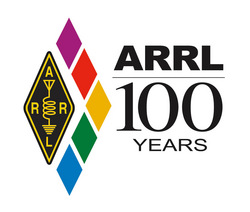 Convention Center in Hartford. ARRL President Kay Craigie, N3KN, will join FEMA Administrator Craig Fugate, KK4INZ, on Friday, July 18, at 4:15 PM, in signing the MOA, which is aimed at fostering greater cooperation between the League and FEMA in the area of disaster communication and support. Fugate will speak at the Centennial Banquet later that evening, and more than 850 are expected to attend.
Convention Center in Hartford. ARRL President Kay Craigie, N3KN, will join FEMA Administrator Craig Fugate, KK4INZ, on Friday, July 18, at 4:15 PM, in signing the MOA, which is aimed at fostering greater cooperation between the League and FEMA in the area of disaster communication and support. Fugate will speak at the Centennial Banquet later that evening, and more than 850 are expected to attend.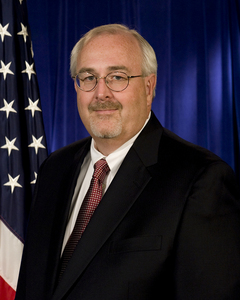
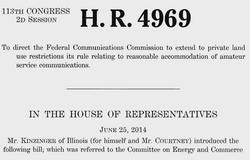 The measure, introduced in the US House with bipartisan support on June 25, calls on the FCC to apply the "reasonable accommodation" three-part test of the
The measure, introduced in the US House with bipartisan support on June 25, calls on the FCC to apply the "reasonable accommodation" three-part test of the 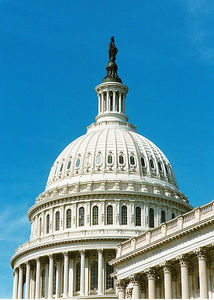 After the Telecommunications Act of 1996 ordered the FCC to enact regulations preempting municipal and private land-use regulation over small satellite dishes and broadcast TV antennas, the FCC further acknowledged that it has jurisdiction to preempt private land-use regulations that conflict with federal policy. At this point, PRB-1 only applies to state and local zoning laws and ordinances. The Commission has indicated that it won't extend the policy to private land-use regulation unless Congress instructs it to do so.
After the Telecommunications Act of 1996 ordered the FCC to enact regulations preempting municipal and private land-use regulation over small satellite dishes and broadcast TV antennas, the FCC further acknowledged that it has jurisdiction to preempt private land-use regulations that conflict with federal policy. At this point, PRB-1 only applies to state and local zoning laws and ordinances. The Commission has indicated that it won't extend the policy to private land-use regulation unless Congress instructs it to do so.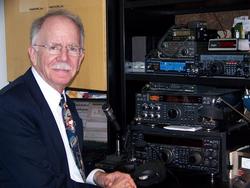
 transmitted music on the same frequency, and failed to properly identify. The FCC said agents from its Portland, Oregon, office on May 13, 2014, used radio direction-finding techniques to pinpoint the source of the interfering signal to Price's residence and further observed that Price was transmitting music and did not identify at the end of each communication, as required.
transmitted music on the same frequency, and failed to properly identify. The FCC said agents from its Portland, Oregon, office on May 13, 2014, used radio direction-finding techniques to pinpoint the source of the interfering signal to Price's residence and further observed that Price was transmitting music and did not identify at the end of each communication, as required..jpg) In a June 20 letter to Friedlander, the FCC pointed out that GMRS transmitters that also can be used on Amateur Radio frequencies will not be certificated. The FCC said it adopted that rule "to prevent the possible proliferation of GMRS equipment that is also capable of operating on frequencies for which the GMRS licensee is not authorized."
In a June 20 letter to Friedlander, the FCC pointed out that GMRS transmitters that also can be used on Amateur Radio frequencies will not be certificated. The FCC said it adopted that rule "to prevent the possible proliferation of GMRS equipment that is also capable of operating on frequencies for which the GMRS licensee is not authorized."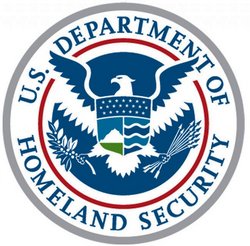 "DHS continually assesses the global threat environment and reevaluates the measures we take to promote aviation security," DHS Secretary Jeh Johnson said on July 2. "As part of this ongoing process, I have directed TSA to implement enhanced security measures in the coming days at certain overseas airports with direct flights to the United States. We will work to ensure these necessary steps pose as few disruptions to travelers as possible."
"DHS continually assesses the global threat environment and reevaluates the measures we take to promote aviation security," DHS Secretary Jeh Johnson said on July 2. "As part of this ongoing process, I have directed TSA to implement enhanced security measures in the coming days at certain overseas airports with direct flights to the United States. We will work to ensure these necessary steps pose as few disruptions to travelers as possible."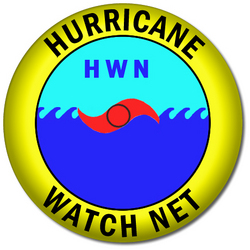 on Thursday, July 3, as the storm threatened to make landfall along North Carolina's Outer Banks. The net moved to 40 meters (7.268 MHz), after propagation was lost on its primary 14.325 MHz frequency. The first activation lasted 18 hours. The HWN activated again on Saturday, July 5, at 1100 UTC, as Hurricane Arthur, still a Category 1 storm, worked its way up the Eastern Seaboard headed for Canada.
on Thursday, July 3, as the storm threatened to make landfall along North Carolina's Outer Banks. The net moved to 40 meters (7.268 MHz), after propagation was lost on its primary 14.325 MHz frequency. The first activation lasted 18 hours. The HWN activated again on Saturday, July 5, at 1100 UTC, as Hurricane Arthur, still a Category 1 storm, worked its way up the Eastern Seaboard headed for Canada..jpg) Championship
Championship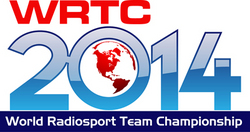 the organization's abbreviation, and it might be helpful to review these beforehand. Member societies are listed by region on the
the organization's abbreviation, and it might be helpful to review these beforehand. Member societies are listed by region on the 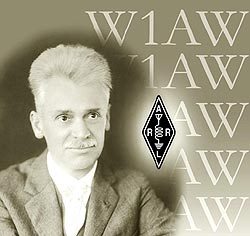 The
The 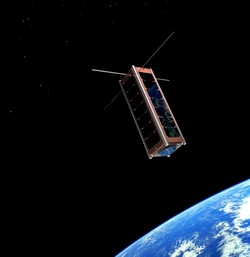 UKube-1 "hosts" FUNcube-2 -- actually a set of
UKube-1 "hosts" FUNcube-2 -- actually a set of 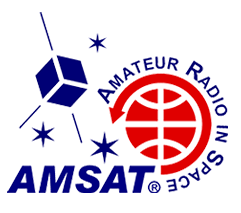 In addition to the three Board seats to be filled this year, plus two alternates, there will be an additional Board seat to fill the remainder of the term of Tony Monteiro, AA2TX, who died earlier this year.
In addition to the three Board seats to be filled this year, plus two alternates, there will be an additional Board seat to fill the remainder of the term of Tony Monteiro, AA2TX, who died earlier this year.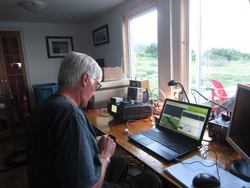
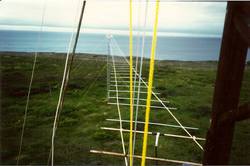
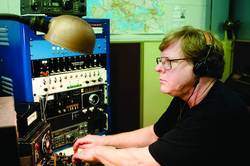
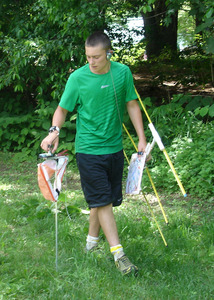
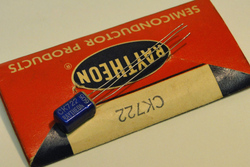
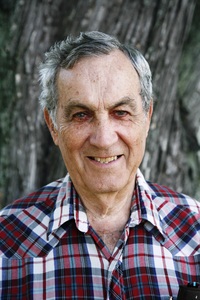
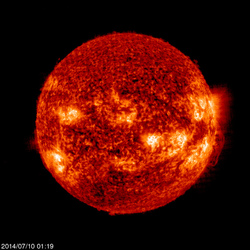 We don't have predictions for daily sunspot numbers, but the predicted average solar flux for the 7 days following July 9 is 157.9, a decline of 36 points from the previous 7 days.
We don't have predictions for daily sunspot numbers, but the predicted average solar flux for the 7 days following July 9 is 157.9, a decline of 36 points from the previous 7 days.







